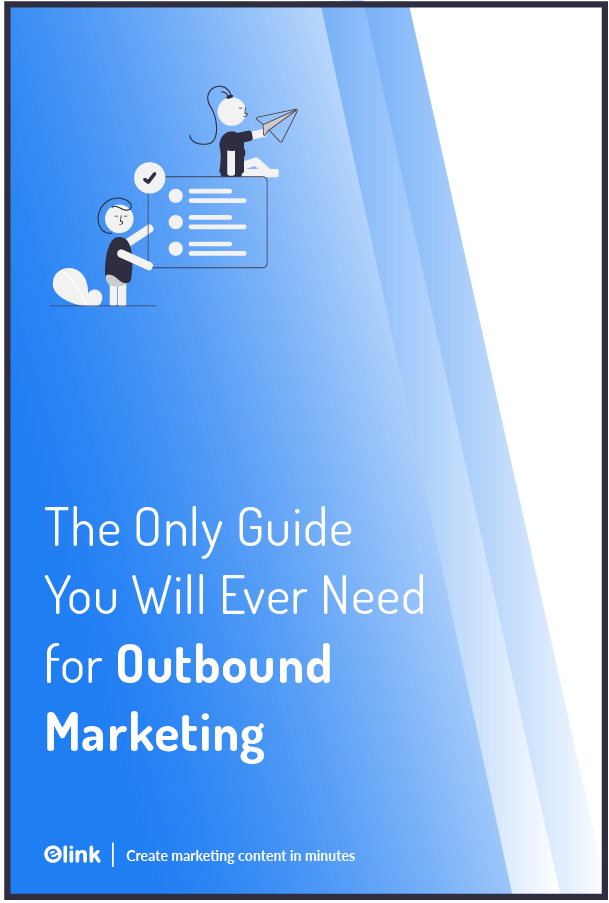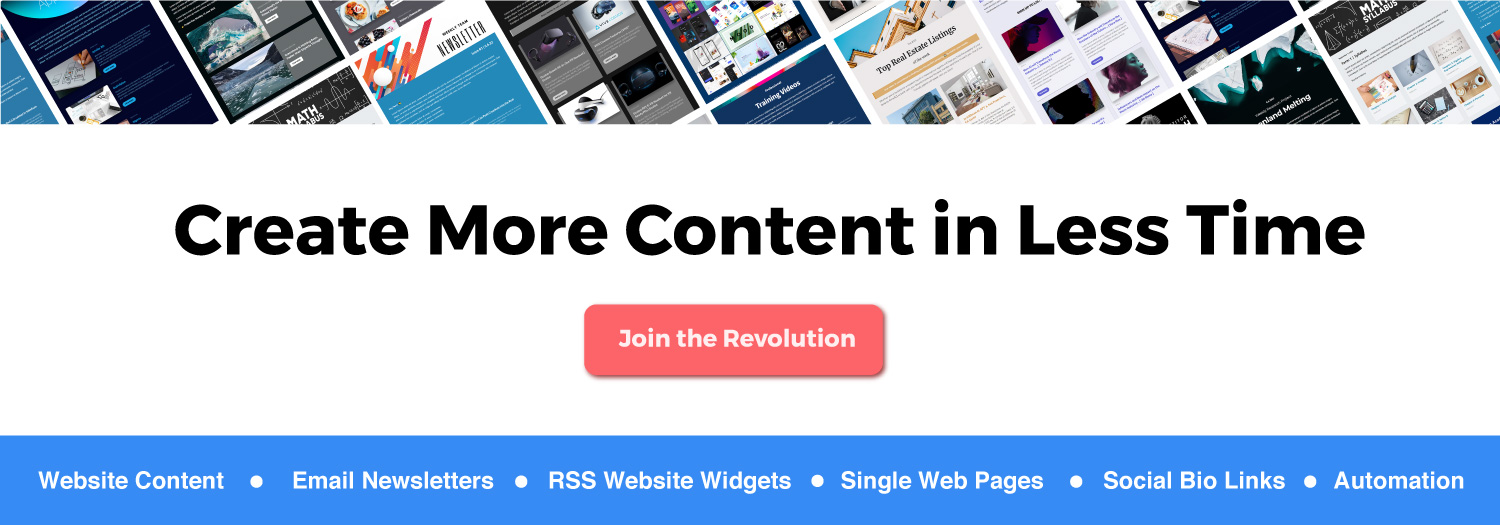Spreading the word about a new product or service is one of the main goals of any business.
However, with so many different forms of communication available, companies are often faced with the dilemma of picking the apt communication channels.
Marketing professionals have been trying to understand the most efficient ways of business communications for a while now, and with new methods coming up periodically, the debate isn’t about to end anytime soon.
However, irrespective of all the new forms of communication that have emerged due to technology, companies often resort to the tried and tested forms of communication.
These methods have been around for years and have traditionally led to lots of growth and exposure for companies. These traditional forms of marketing are usually part of outbound marketing.
In this article, we’ll be talking about the meaning of outbound marketing, its importance, and how it is executed in the real world. Ready for some marketing knowledge? Let’s go!
What is Outbound Marketing? (Definition)

Outbound marketing refers to traditional forms of marketing efforts that are initiated by your company. It involves you starting the conversation and sending out messages to potential customers.
Examples of outbound marketing are television commercials, billboard advertising, trade shows, emails to purchased consumer lists, cold calling, and telemarketing.
Hence, it involves the company reaching out to potential customers to see if they might be interested in what your company has to offer.
This is the opposite of inbound marketing, which involves customers seeking information about your product or service and then reaching out to you in some way or the other.
In the next section, let’s take a look at why the traditional forms of outbound marketing are still important and relevant in the 21st century!
The Importance of Outbound Marketing
Using outbound marketing as one of your marketing communication strategies has many benefits:
1. Mass Oriented
Most outbound marketing channels like TV and radio advertisements, billboards, and brochures are mass-oriented. They don’t target a particular market segment based on demographics, etc.
Hence, outbound marketing can be used to reach out to people across various age groups, genders, preferences, tastes, and personalities.
Since you can reach out to such a wide range of audiences, there’s a good chance someone will relate to what you have to offer and may search about or buy your product.
Moreover, outbound marketing will improve your overall brand awareness as more people will be exposed to your product. Since more people know about it, they are also more likely to talk about it with their friends and family.
Read more: Marketing Psychology: 9 Strategies to attract Customers!
2. Easy to Implement
Compared to inbound marketing, outbound is much easier to implement as it usually requires lesser labor and time efforts.
While being more expensive in the long run, outbound marketing is easier to get started with, whereas inbound marketing techniques like content marketing require consistent and dedicated efforts, often without any initial tangible results.
Outbound marketing guarantees some level of exposure and brand awareness whereas inbound takes a while to reach the same level of exposure.
3. Emotional Appeal

One of the main reasons traditional marketing methods work so well is because they resonate with the emotions of consumers. Most of these outbound marketing channels have visual stimuli being sent out to the customer.
Humans are visual creatures who tend to respond emotionally and more seriously to visual information. Hence, outbound marketing is a great way to get customers engaged with your communication efforts and for the growth of your company.
4. Rare Negative Chain Reactions
Outbound marketing is a one-way marketing tool, where only you can reach out to your customer and they can’t give you direct feedback. Similarly, unless they make the effort to talk about your ads to their friends, there is no way that any negative reception of your ads can be spread from one person to the next.
It is possible but requires more effort from the customer’s end as there is no direct way to share or comment on your ad to the world. Hence, if your outbound marketing tool doesn’t resonate with them, there is a lower chance they will talk about it. They will probably just ignore it and move on with their busy lives!
5. Easier to Target Older Age Group
Yes, we did say that outbound marketing caters to a wide range of audiences, but it also helps reach out to the older age group segments in a more efficient way.
In the past 10 years, the younger generations like millennials and Gen Z have been moving away from watching television, reading the newspapers, or paying attention to billboard ads. They have been engaged with binge-watching Netflix, consuming social media content, and looking up the internet for answers to their questions. Hence, outbound marketing doesn’t work as well with them.
On the other hand, the older generation still watches more television, actually reads newspapers, and is more likely to be receptive to flyers and print media. Hence, while inbound marketing would be more appropriate for the younger generations, outbound marketing helps target populations within baby boomers and Gen X categories.
Now that you’ve understood why outbound marketing can be so useful, let’s get to the crux of this article by learning how it works and how you can start implementing it today!
How Does Outbound Marketing Work? Different Channels!
In outbound marketing, the consumer doesn’t go out of their way to understand your product or service – you have to reach out to them. There are various marketing channels that can be used for outbound marketing:
1. Television Advertisements

This outbound marketing tool arguably has the most impact. Since it covers the whole screen and doesn’t fight for screen space, it gets the most engagement.
TV ads also allow you to reach a large number of people, especially if you advertise during important events like the Super Bowl or any other sports finals. While this may be an expensive option, it guarantees millions of eyes on your product and can lead to high brand awareness and sales.
Historically, it also has a decent return on investment. Stats have shown that TV ads can have as much as a 400% return on investments.
That being said, most people who watch television dislike advertisements. Not only is any advertisement seen in a negative light because it interrupts what they were watching, but many people just mute the TV or do some other work during the ad breaks.
So keep in mind the channel and programs where you want your advertisement to show up, as this can make a big difference to the effectiveness of your advertisement.
Read more: Marketing Strategies to Take Your Business to the Next Level
2. Advertisements
Radio advertisements are less effective because they are auditory and not visual in any manner. However, they definitely have advantages. Brands and organizations can get a lot of exposure by advertising through the radio.
Moreover, radio advertisements are easier to make as it is only audio, and it is a much more affordable option compared to television advertisements.
3. Billboard Advertisements

These ads are strategically placed across busy roads and also near important tourist locations that can boost your exposure. They are great for local businesses and can be effective in driving customers to other places.
Moreover, these ads are working 24/7, and most importantly, customers don’t need to pay anything to view them like in the case of television (cable) or newspapers.
4. Flyers and Brochures
These are small pages with information regarding your company and the benefits of your product. This form of outbound marketing is very useful for local and small to medium-sized businesses.
A tangible piece of information sent to others allows you to show your dedication to your business. This especially resonates with the older generation who are used to receiving and reading physical mails for a long time.
5. Paid Email Marketing
Many companies buy email lists from other companies, who have some knowledge about the customers’ interests in the niche. When you buy email lists and then send them information regarding your products, it is a form of outbound marketing.
Note that this is very different from the ‘opt-in’ email notification, which is a form of inbound marketing. This is a quick way to reach out to customers who have some interest in your industry, but it is often seen as unprofessional and spammy.
6. Cold-Calling

Similar to paid email marketing lists, cold calling is also a bit spammy and looked down upon.
It involves calling people from pre-gained number lists, which can be outdated and privacy-invading. Be ready to face a lot of nos if you use this tool.
However, if you get lucky, you can get a few people to hear you out and they may end up resonating with what you have to offer.
7. Trade Shows
One of the more organic forms of outbound marketing, trade shows of your industry allow you to showcase your product to people who are within the same industry or who are interested in it.
Trade shows give you a genuine opportunity to reach out to people who may like your product and hence will consider buying it. However, they can be time-consuming and a lot of effort goes into them, with no actual guarantee of returns.
Conclusion
Outbound marketing is the oldest and most traditional form of marketing.
Since it has been around for so long, it resonates well with customers and especially with older generations. It has its fair share of advantages and disadvantages.
That being said, it is important to have a balanced marketing strategy that has a mix of both, outbound as well as inbound marketing. Having a balanced strategy will help you take your business to heights!
Further reads:
A Complete Guide to Influencer Marketing
Meme Marketing: Definition, Tips & Examples!
Cross-Promotion: Definition, Benefits, Tips & Ideas!
6 Ridiculously Simple Email Marketing Tips For Content Marketers!
Referral Marketing: Everything You Need to Know About it!
Cross-Promotion: Definition, Benefits, Tips & Ideas!
15 Clever Marketing Tactics You Need To Know!







